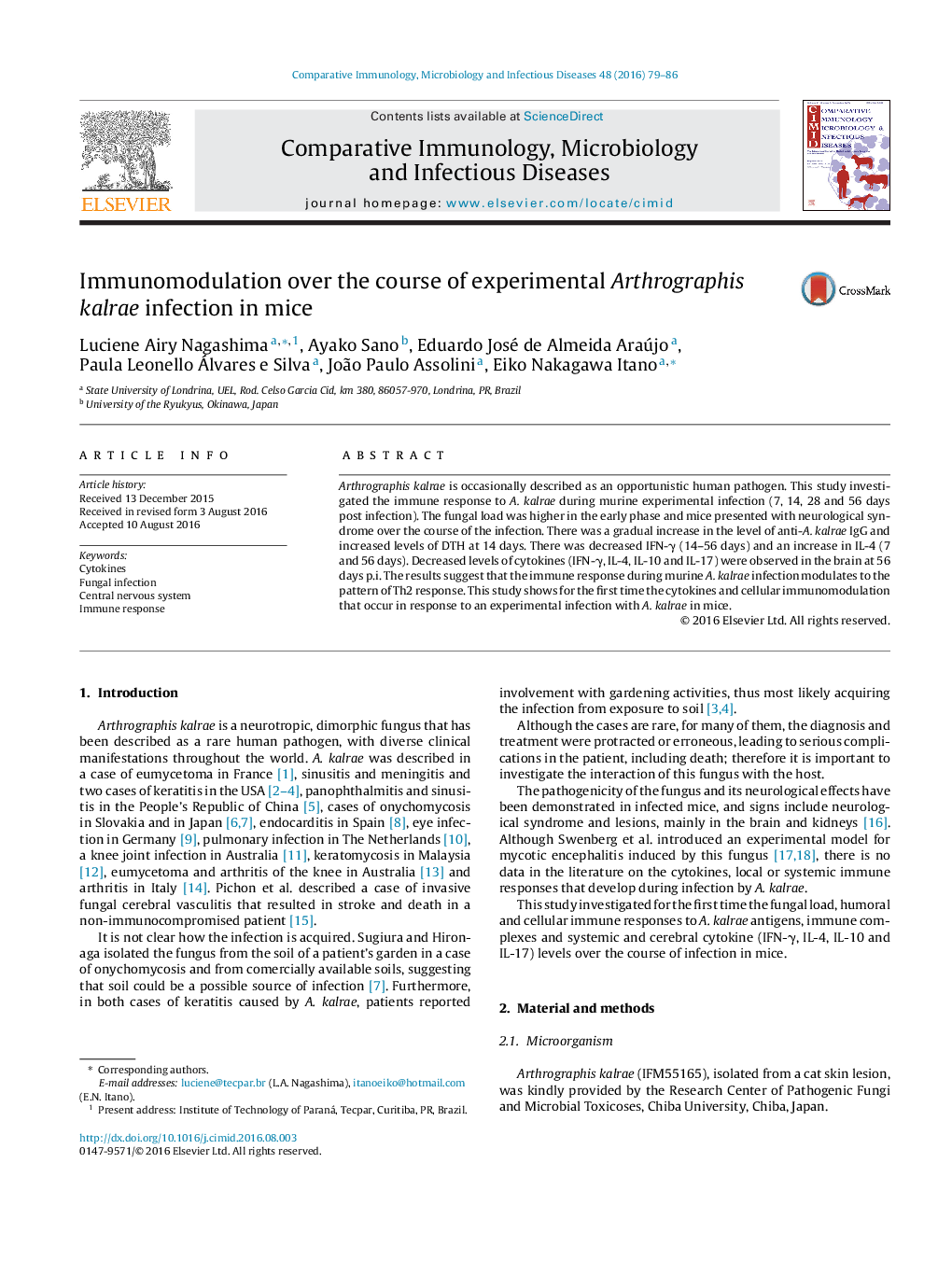| Article ID | Journal | Published Year | Pages | File Type |
|---|---|---|---|---|
| 2428120 | Comparative Immunology, Microbiology and Infectious Diseases | 2016 | 8 Pages |
•Mice infected with A. kalrae presented neurological signs and weight loss.•There was a decreasing in fungal load and gradual increase in IgG.•A. kalrae induces systemic immunomodulation, possibly to a Th2 response.•Decreased levels of cytokines were observed in the brain 56 days after infection.
Arthrographis kalrae is occasionally described as an opportunistic human pathogen. This study investigated the immune response to A. kalrae during murine experimental infection (7, 14, 28 and 56 days post infection). The fungal load was higher in the early phase and mice presented with neurological syndrome over the course of the infection. There was a gradual increase in the level of anti-A. kalrae IgG and increased levels of DTH at 14 days. There was decreased IFN-γ (14–56 days) and an increase in IL-4 (7 and 56 days). Decreased levels of cytokines (IFN-γ, IL-4, IL-10 and IL-17) were observed in the brain at 56 days p.i. The results suggest that the immune response during murine A. kalrae infection modulates to the pattern of Th2 response. This study shows for the first time the cytokines and cellular immunomodulation that occur in response to an experimental infection with A. kalrae in mice.
